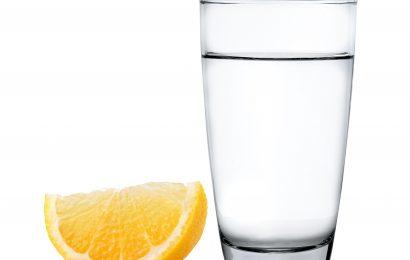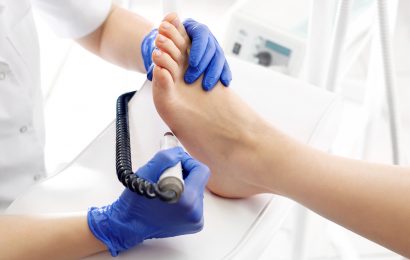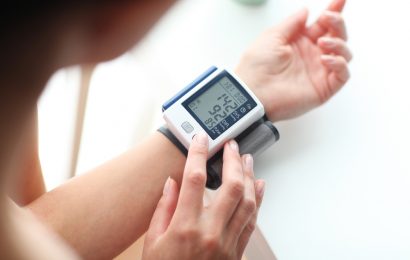Many people with diabetes experience discomfort in their legs and feet, with symptoms such as cramping, numbness, tingling, and pain. The culprits may be poor circulation, nerve damage, or both, and the underlying causes are referred to as peripheral arterial disease (PAD) and peripheral neuropathy. While both appear to be triggered by high blood glucose levels and some of their symptoms overlap, they are two distinct conditions.
In the most common form of PAD, arteries in the legs (and sometimes arms) narrow and harden as a result of fatty plaque deposits, leading to decreased blood flow in the legs and feet. This disorder affects 8–12 million Americans and is far more common in people with diabetes than in the rest of the population: About one-third of people with diabetes over the age of 50 have PAD, although many of them are undiagnosed. Symptoms of PAD include intermittent claudication (cramping leg pain that develops while walking and stops with rest); numbness, coldness, or tingling of the legs and feet; and slow healing of cuts and sores on the affected extremities.
Diabetic peripheral neuropathy is a common complication of diabetes in which nerves in the feet and legs (and sometimes hands and arms) are damaged, resulting in pain and/or loss of sensation. While the exact mechanism by which neuropathy develops is not known, the condition usually develops after years of exposure to high blood glucose levels. Weakened nerve fibers may give off false sensations in the extremities, often experienced as pain or burning; cramps and extreme sensitivity to touch may also result. The loss of nerve fibers can result in muscle weakness, numbness, loss of reflexes, foot deformities, change in gait, and impaired balance and coordination. Loss of sensitivity to pain or temperature can also occur, leading in turn to blisters and sores from foot injuries that go unfelt. If circulation is poor (as a result of PAD, for instance), such wounds may be slow to heal, leading to foot ulcers. Eventually, gangrene may result and amputations may be necessary.
Treatments
Many treatments are available to relieve the pain and discomfort of PAD and neuropathy. Drug treatment is often the first one offered. For PAD, pain relievers, blood thinners, and other drugs that improve blood flow may be prescribed. Drugs prescribed for peripheral neuropathy include pain relievers, certain antidepressants and anticonvulsants, and, as a last resort, narcotics. However, many medicines have side effects and may not be tolerated. For neuropathy, there are also ointments for topical use and therapies such as transcutaneous electrical nerve stimulation (TENS), which uses electricity to block pain signals, and monochromatic infrared energy therapy, which uses near-infrared energy to increase blood flow and relieve pain. Vascular surgeries such as angioplasty or bypass may be used to treat severe PAD, and surgery to relieve nerve compression can help certain types of neuropathy.
— Learn More About Complications & Prevention >>
If the immediate problem is limited blood flow, a simple and inexpensive complementary therapy is a guided relaxation and biofeedback method called WarmFeet. This trademarked mind–body technique can increase blood flow to the periphery of the body and relieve pain. Regular practice of the WarmFeet technique also provides side benefits such as lower blood pressure and improved coping skills, both quite useful for people with diabetes.
How relaxation helps
Have you ever wondered why putting your feet up and relaxing after a long day feels so good? There is a physiological explanation. The body’s reactions to stress and relaxation fall at opposite extremes on the continuum of nervous system activity. The nervous system generally maintains a balance between its sympathetic (action oriented) division and its parasympathetic (rest and recovery) division. Stress provokes the “fight or flight” response of the sympathetic division, which increases heart rate, blood pressure and blood glucose levels and increases blood flow to the brain, heart and skeletal muscles. These effects are often prolonged by the release of stress hormones. Relaxation, on the other hand, provokes an increase in parasympathetic activity, which reduces heart rate and blood pressure and routes blood away from the muscles and vital organs and toward the digestive system and the skin. This increased blood flow to the skin warms it and increases the amount of oxygen and nutrients available to the periphery of the body.
When the body relaxes, it also uses carbohydrates more efficiently: Blood glucose levels may decrease 2–4 hours after relaxation. For people who use insulin, it is important to be aware of this possibility. Monitoring blood glucose levels more frequently when starting a formal relaxation program is therefore advisable.
The WarmFeet technique
WarmFeet is a standardized technique designed to take advantage of the body’s natural relaxation response, which widens the peripheral blood vessels and improves circulation in the hands and feet. Inducing relaxation is the first step of the technique: Instructions on a CD or audiotape prompt the user to release tension through conscious muscle relaxation and breath work.
The second step involves visualization, in which a person imagines comfort or warmth around his feet. Visualization, or forming a mental image, is often used in stress reduction and self-healing and has played a successful role in the treatment of various illnesses. It is particularly helpful when the body is in a relaxed state. As a component of the WarmFeet technique, visualization permits the feet to feel even warmer or more at ease. Healthy outcomes or desired healing can also be visualized, and remembering the beauty and strength of the legs and feet at an earlier age is another very encouraging and powerful image. The WarmFeet recording suggests various images that can be used during the visualization portion of the relaxation session.
The third key component of the WarmFeet technique is called assisted thermal biofeedback. Biofeedback is a method in which people use measured information about changes in bodily processes to gain conscious control over normally unconscious physiological functions (such as skin temperature). In this case, assisted thermal biofeedback means measuring skin temperature at a specific site (such as a finger or the big toe) before relaxation and then again afterward. This before-and-after setup allows the relaxation time to be spent relaxing rather than worrying about a temperature change. A temperature increase recorded at the end of practicing the WarmFeet technique indicates that a more relaxed state has been achieved. Remembering how this relaxed state feels and then aiming for that sensation the next time the technique is practiced strengthens and improves a person’s ability to achieve the desired outcome of skin temperature increase. Keeping a log of temperature changes also reinforces the development of this new skill.
Research findings
At the University of Wisconsin, research was conducted to test the effectiveness of this biofeedback-assisted relaxation technique. A randomized, controlled, multisite clinical trial was performed on a group of people who had had chronic, nonhealing ulcers on the feet for at least 8 weeks to see if the relaxation therapy would improve the healing process. Half of the study participants had diabetes, and all were under the treatment of a podiatrist. The medical outcomes were highly significant for increased wound healing and increased sensation. Fourteen of 16 participants who practiced the relaxation technique (for 16 minutes 5–7 days a week) completely healed their chronic ulcers within the 12-week study time. Only 7 out of 16 in the control group that didn’t use the technique healed their ulcers. After the study was over, four of the people from the control group who had unhealed ulcers learned the relaxation technique. Although their ulcers were now three months older than those in the first part of the study, with the relaxation technique they all healed within 13 weeks. This study and other research findings have been presented nationally and published in the medical journals Diabetes Care, Diabetes, and Journal of the American Podiatric Medical Association.
In clinical applications of the WarmFeet technique, pain relief has been the most common and significant result. For example, one man had such excruciating pain in his feet that he could neither eat nor sleep. His physician suggested he learn the WarmFeet relaxation technique and practice it daily. After two weeks he was almost pain-free. His vascular surgeon, who had been considering an amputation because of impending gangrene in his toes, saw improvement in his tissues and put the surgery off for the time being. The man, delighted to be free of pain and grateful for the improved circulation, was able to continue with his plan to go south for the winter. He continued to practice the technique nearly every day while away, and when he returned home in the spring he was still doing well.
Learning to use WarmFeet
The WarmFeet technique can be used as a self-help treatment to provide pain relief and healing or as a preventive effort to increase peripheral blood flow. For potential users who have had longstanding pain or chronic ulcers, the technique is best introduced by a health-care professional who can assist them in learning to relax and provide them with encouragement and hope. This introductory session usually takes around 30–45 minutes. The technique can then be practiced at home with the WarmFeet Kit, which includes a personal skin thermometer and a CD or audiotape with instructions on side one and the relaxation technique on side two. To maximize positive outcomes when using the WarmFeet technique, it is very important to spend time each day learning and practicing the skill of relaxation. New users often see some success right away with a small temperature increase of around 1–2°F. But practicing once or twice a day for 16 minutes at a time allows one to master the technique. With practice, the relaxation will come sooner and be deeper, and greater increases in skin temperature (4–10°F) may be seen.
Benefits from daily practice with the WarmFeet technique include the following:
-
- Increased peripheral blood flow
-
- Reduced pain in the legs and feet
-
- Faster healing for foot ulcers
- Improved coping skills for daily stresses
While learning any new skill takes time, patience and practice, almost everyone is able to learn to relax with the WarmFeet technique. Because its methods have been validated by research and clinical work, and it is noninvasive, nonpharmaceutical, inexpensive and easily taught and learned, WarmFeet is a promising new complementary therapy in the fields of foot and wound care.
Want to learn more about keeping your feet healthy with diabetes? Read “Your Annual Comprehensive Foot Exam,” “How to Choose Footwear” and “Taking Steps Toward Healthy Feet.”





